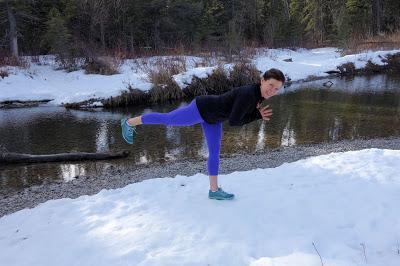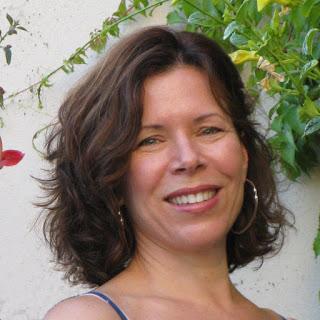
Ramona Pittman, Age 56
A lifelong commitment to health is central to who I am. Yes, I mean that in relation to my own health, but also in relation to nurturing health in others, although the context for that has changed over the years. As the eldest of six siblings, caring for others began early. Then came a 34-year career in healthcare, which began as a Registered Nurse and culminated working in the corporate realm of healthcare. After taking early retirement in 2014, I started teaching yoga on a regular basis.In 1993, I was a Registered Nurse working full-time 12-hour shifts in the Emergency Department. I was a runner and an aerobics teacher, (yes, leg warmers and all in those years…groan!), and I was active, fit and healthy. Then, one day, while stopped at a red light in my vehicle, I was rear-ended. I did not see it coming. Instant neck pain gained me an ambulance trip to the Emergency Department, where an X-ray showed a small (non-dangerous) chip fracture to a lower cervical vertebrae. However, it was the damage that didn’t show on X-ray that significantly impacted my life in the days, weeks, months and years to come.
As someone who thought of myself as strong, and, well, tough, the impacts of the pain were humbling, to say the least. I have a clear memory of a particular evening during the first week post-accident. The pain seemed all encompassing, and I could not find a position to be in that felt even vaguely OK, nor could I find a way to move my body that didn’t make the pain worse. The muscle relaxants I’d been given did not help, and I felt frustrated, teary and quite sorry for myself. In the early weeks, the pain prevented many simple movements, such as being able to roll over in bed or even lift my head from the pillow.
The pain was primarily in the right side of my neck, the top of the right trapezius and in the rhomboids of my right upper back. Often, those muscles were so tight/spasmed/contracted, that if you were to run your fingers down my spine, you could actually feel the spinous process of one vertebrae pulled out of alignment to the right. Not good. I experienced numbness down my right arm for a couple of years.
Initially, I wasn’t able to work. I also couldn’t lift my arms above my head, couldn’t turn my head to shoulder check while driving, and I couldn’t do anything that required neck flexion. I had to stop teaching aerobics. Massage therapy was helpful, but the effects were always short term. After completing a two-month back rehabilitation program, I was eventually able to return to work in the Emergency Dept., but had to drop back to three-fourths time, as working too many days in a row would always cause a recurrence of worsened symptoms. When the discomfort got really bad at work, I would spread out a blanket and lay on the floor in the nursing station, which seemed to allow the muscles to relax and my spine to re-align. (Aha! A yoga clue!) After several months, I was able to return to running. Upright, forward movement did not increase my symptoms, and heating my muscles seemed to help in general.
In the years to follow, my new normal included the reality that many types of upper body/arm effort (stirring, sewing, raking, digging in the garden, scrubbing out a tub, shoveling snow) caused discomfort.
In 2002, after moving to a new city, I noticed ads in the community paper for a hot yoga studio near where I lived. Never having experienced or explored yoga in any way, I knew zero about the practice. What I did know is that heating my muscles (with running) felt good, so I decided to give hot yoga a try.
Wow. Aside from sweating more than I thought was humanly possible, I left that first class feeling….awesome!! Yes, I had worked and moved and used muscles in new ways. But it was the feeling of calm energy that made me want to return. In my once-a-week class practice (all I could fit in at that time in my life), I observed that every movement in a certain direction seemed to be paired with a movement in the opposite direction: left, then right; forward, then back; up, then down, and I had the distinct sensation that my spine was being re-balanced. Double wow!
After a few months, I realized that I didn’t have neck and back discomfort anymore. What?!?! Triple wow! Why hadn’t I tried yoga sooner? What exactly was going on? My curiosity about yoga exploded, and that’s when my journey of learning and exploring yoga really began.
Yoga that helped improve my flexibility and range of motion seemed to be movements that asked my spine to move in all directions. This included arm raises in any direction, side bends of any type, back bends, forward folds, and twists. Some examples: Upward Salute with side bend, Extended Side Angle, Extended Triangle, Warrior 1, Chair, Wide Leg Forward Fold, Cat-Cow, Seated Wide Angle with side bend, Child’s pose, Little Bridge, Camel/Camel Prep, and seated twist. The other aspect of yoga that helped was the mindfulness, the simple act of paying attention to what was going on in body, mind and breath.
Two components of yoga that helped eliminate the chronic pain were learning how to relax, and learning how to tune in to my body to recognize when muscle tension was contributing to pain. My go-to relaxation practices in the early years were Legs Up the Wall and Savasana (and they still are today!). I was fortunate to have some good teachers who offered a type of guided relaxation in Savasana that really worked for me. During Savasana, I felt such a connection to and kinship with the earth and the support of the earth, that I had a sensation of being able to feel the earth’s rotation. If that sounds crazy, well, then it does, but it was pretty cool. Learning how to truly let go of tension in a Relaxation pose provides a type of whole-being letting go and restoration that doesn’t generally exist in our everyday lives, but which seems to be a requirement for optimal health. In my experience, that is doubly true within the context of chronic pain, because it’s so common to respond to pain by trying to protect the area by tensing and restricting movement…. which creates more tension, which creates more pain….and so on.
Awareness, again, was key. Rather than accepting discomfort, or powering through discomfort, or ignoring discomfort, I learned to pay attention to my body, to tune in to my body, to stop doing the things that made it hurt (duh!), to recognize tension and to practice consciously and actively letting it go.
Yoga helped to remind me and my body that moving in every direction feels good and is good. I learned to be more proactive about how I lived in my body, rather than reactive when pain emerged. Yoga teaches me to be mindful, and to pay attention to what is happening in body and mind, on and off the mat. I’m learning how to observe with less judgment and less reactiveness, and to simply be more at ease with what is. Yoga has taught me how to be still, how to relax, how to restore body and mind. Of course, I haven’t finished learning anything; I’m a work in progress, as we all are!
My initial experiences with yoga motivated me to learn more, study more, research more, practice more. Eventually I completed yoga teacher training, and now I teach yoga! I believe that health is our natural state, and that yoga can help us maintain or restore health. Although all yoga is not appropriate for all people, there is yoga that is right for each individual. Keeping an open yet discerning mind, especially in the presence of an injury or condition, can help you identify the yoga and the teachers that resonate with you. When life is very busy, it’s still usually possible to fit a little bit of yoga into your day. That can be as simple as taking one, mindful, deep breath, doing one energizing pose, or practicing a restorative posture. Your yoga is what you make of it; make it yours.

Subscribe to Yoga for Healthy Aging by Email ° Follow Yoga for Healthy Aging on Facebook ° Join this site with Google Friend Connect

